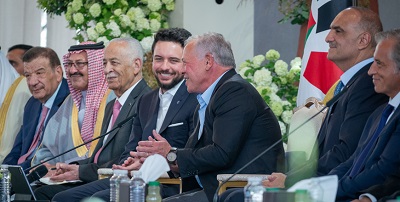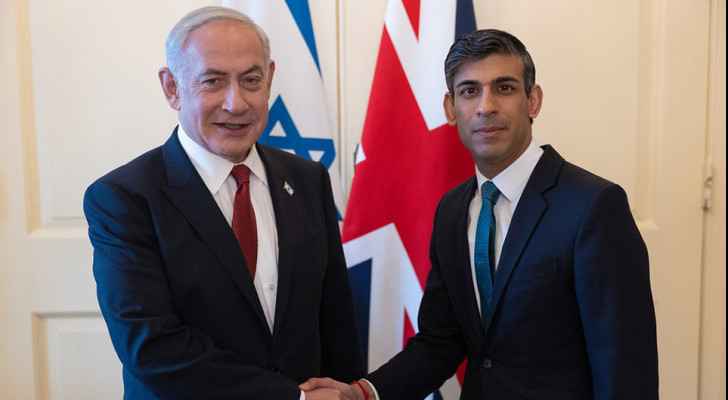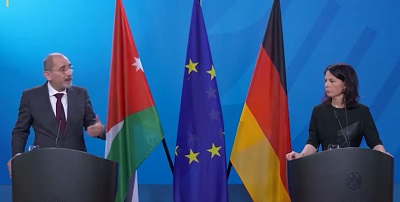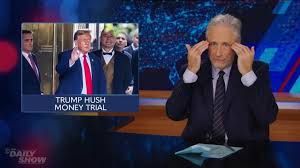Soleimani dead, shadows do bleed - By Makram RabahFriday, Alarabiya
Donald Trump has been branded by many as a mere Twitter tiger who roars but never turns his often absurd and impetuous statements into actions. Despite adopting a hawkish demeanor, Trump has always dragged his feet when it came to authorizing military action against the traditional enemies of the United States, particularly Iran and its many subsidiaries – Hezbollah, the Popular Mobilization Units (PMU) militias or any of their fellow travelers.
This perception was shattered on the early hours of Friday January 3 when news broke out that the Iranian commander of the Islamic Revolutionary Guards Corps (IRGC) – Quds Force Qassem Soleimani and Iraqi PMU militia leader Abu Mahdi al-Mohandes were assassinated as they made their way from Baghdad International Airport.
The US drone strike against this valuable and infamous target is not really much of surprise as Soleimani and his breed of men with their elaborate killing careers are not destined to die in their beds, but rather perish as he did gruesomely and dramatically.
However, the real surprise was the timing of the attack and Trump’s decision to authorize lethal action against one of the US’s most notorious enemies – one that former Presidents such as Bush and Obama both decided to spare so as to avoid the spillover of such a perilous but needed act. The definite consequences of Soleimani’s slaying did not deter Trump as the Pentagon blatantly announced that the operation was a preemptive strike against an enemy combatant who was planning future strikes against US targets in the region.
For the numerous opponents of Iran, Soleimani’s assassination was met with a mix of fearful joy and dread as everyone was trying to predict Iran’s reaction to losing one of its most effective and lethal assets, and one whose death is a direct blow to his immediate superior, Iranian Supreme Leader Ali Khamenei. While Soleimani’s killing might come as a clear act of war against Iran, the latter’s retaliation will take on an asymmetric shape which will surely avoid taking on the United States in an open and guaranteed losing battle.
Accordingly, all eyes have now turned towards Iran’s prime operator in the region: Hezbollah, who are expected to avenge their field marshal and try to repair what remains of Iran’s shattered stature.
Allegedly, the drone attack this morning also targeted three other Lebanese nationals who are reported as Hezbollah’s Deputy Secretary General Naim Qassem, Muhammad al-Kawtharani, head of Hezbollah Iraqi file, and Samer Abdallah, head of external operations and the son-in-law of the infamous Imad Mughniyeh.
While the three Hezbollah senior members have not yet been confirmed dead, their presence at Soleimani’s side is much expected, and their role in Iran’s regional expansionist project is beyond pivotal and thus the expectancy of their eminent retaliation grows higher.
The question remains, will Hezbollah punch back using Lebanon and implicate the region in a war with Israel, or will it lay dormant and wait for the right moment to attack one of the many targets on their own kill list?
As it stands Hezbollah, like many of Iran’s proxies, are stretched out and under tremendous pressures locally – be it in Lebanon, Syria and Iraq. While Hezbollah has proven its might in sabotage and military operations, its unheeded activities and overreaching has exposed its host body to US financial sanctions which has exasperated and augmented the already existing system of corruption in these respective states and thus pushed their economy into the abyss.
As for Iran’s other assets, particularly the PMU militias, the Iraqi popular uprising and resolute stand of the Iraqi people have proven that Iran has no real Shi'ite supporters in Iraq but mere followers, and thus any type of retaliation against American positions will not be tolerated by local US allies.
Soleimani was not only a seasoned military leader but was the quasi Iranian High Commissioner who would make unannounced visits to politicians across the region and sweet-talk, convince, and even bully them to into accepting the terms of Iran even if it came at the expense of their own people.
The sight of his riddled and mutilated body on the tarmac in Baghdad cannot be swept away by any theatrical military operation from Hezbollah or its junior partners, and shows that Iran’s self-perception of being a mighty empire and its weak economic and military reality do not gel.
Soleimani’s killing is a watershed moment in America’s war against Iran as the drone and its missiles did not only end the life of two people but it also marked the end of an appeasement policy that successive US administrations have followed by distinguishing the so-called Sunni brand of terrorism from the Shia one.
Above all, the recent events in Lebanon and Iraq, and the popular uprisings that followed, exposed the weakness of Iran and its various militias who still think that the Obama doctrine and the unwillingness of Trump to go to war protects them from harm.
Soleimani’s fame was not only acquired on the battlefield, but also through clueless promotion by western media who drew him as a heroic/villainous figure and termed him as Iran’s “shadow commander.” While he might have indeed been a shadow to Khamenei, recent events have proved that shadows do bleed and eventually can be killed.
Latest News
 King from Mafraq: Jordan’s security, sovereignty above all considerations
King from Mafraq: Jordan’s security, sovereignty above all considerations Sunak tells Netanyahu to “allow calm heads to prevail”
Sunak tells Netanyahu to “allow calm heads to prevail” Safadi, Germany’s Baerbock discuss war on Gaza, regional escalation
Safadi, Germany’s Baerbock discuss war on Gaza, regional escalation FM, EU commissioner discuss development cooperation, regional de-escalation
FM, EU commissioner discuss development cooperation, regional de-escalation Jon Stewart unpacks Iran launching missiles at Israel
Jon Stewart unpacks Iran launching missiles at Israel
Most Read Articles
- Dubai reels from floods chaos after record rains
- Security Council to vote Thursday on Palestinian state UN membership
- Khasawneh, Saudi Shura Council speaker discuss bilateral ties, regional developments
- King, Bahrain monarch stress need to maintain Arab coordination
- Hizbollah says struck Israel base in retaliation for fighters' killing
- Tesla asks shareholders to reapprove huge Musk pay deal
- The mystery of US interest rates - By The mystery of US interest rates, The Jordan Times
- Princess Basma checks on patients receiving treatments
- Jordan will take down any projectiles threatening its people, sovereignty — Safadi
- Knights of Change launches nationwide blood donation campaign for Gaza